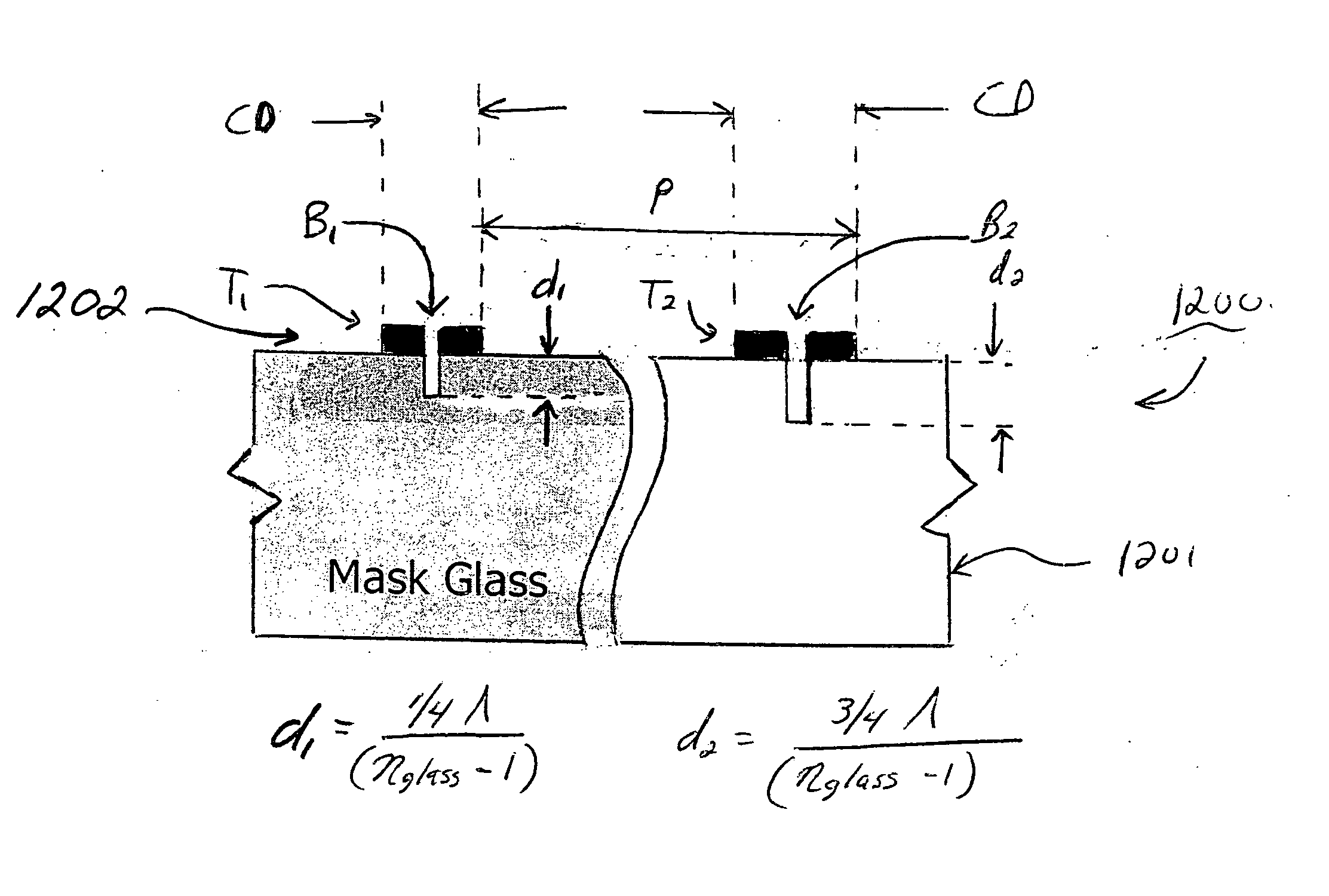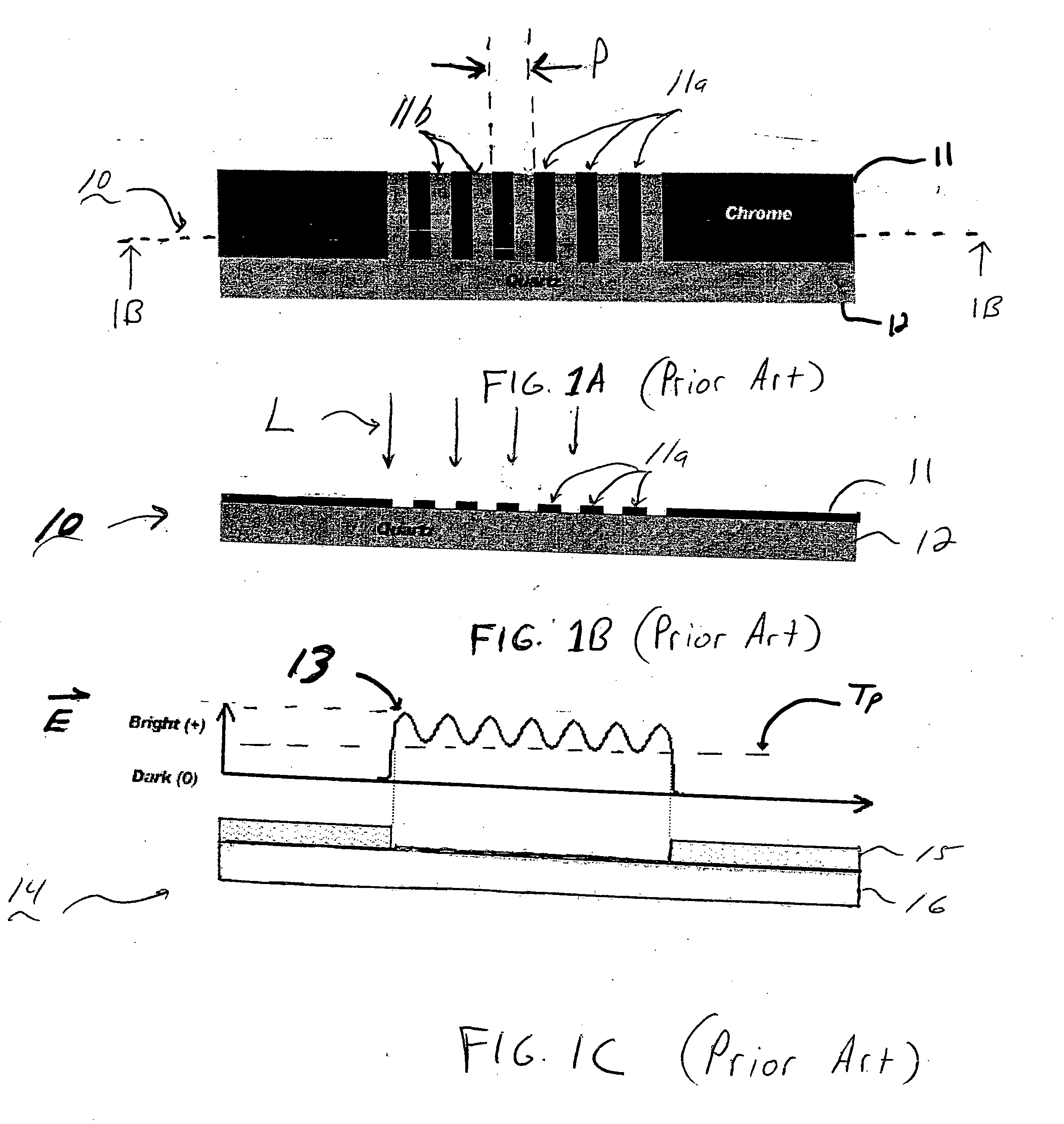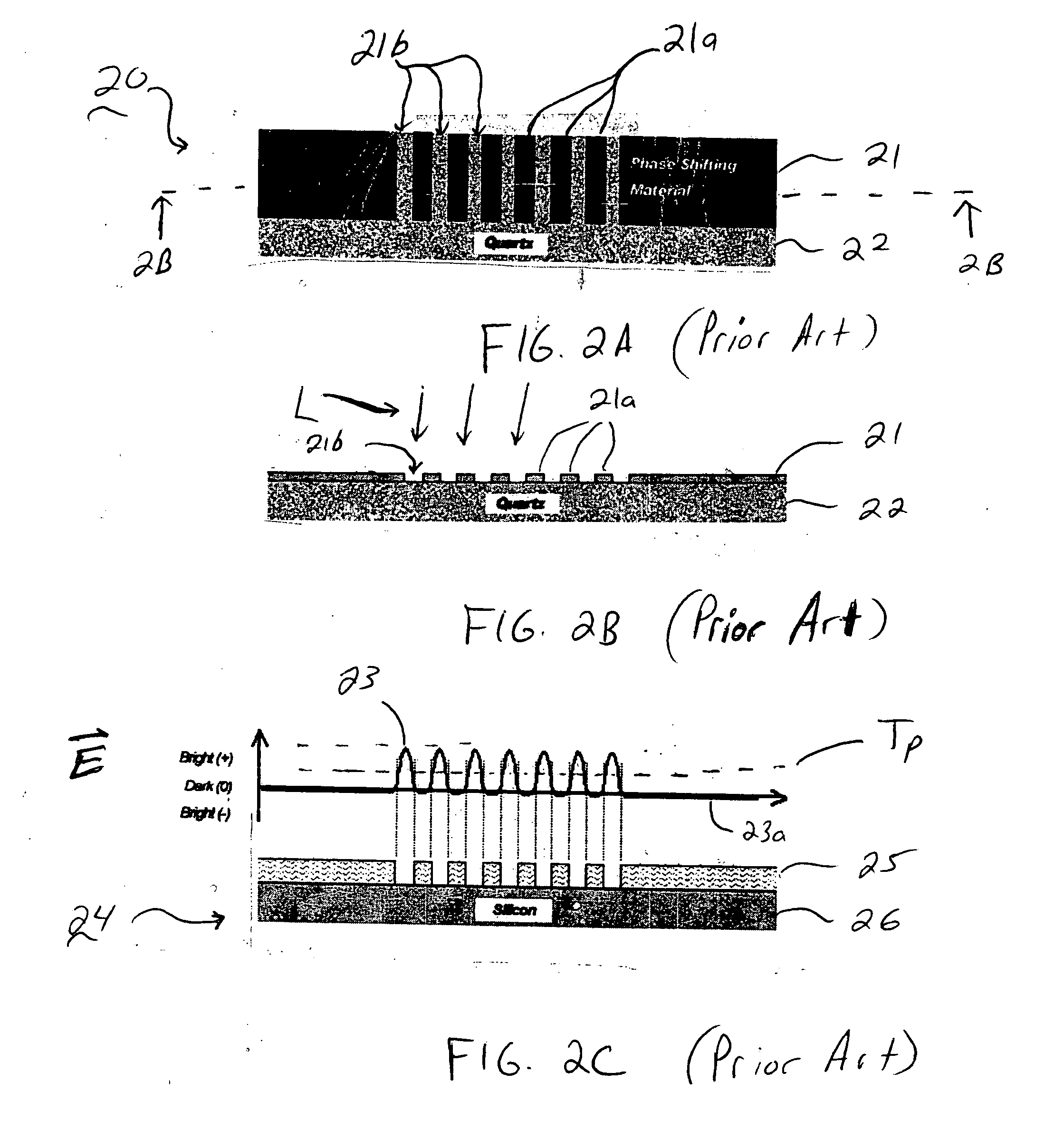Photomask structures providing improved photolithographic process windows and methods of manufacturing same
a technology of photolithographic process window and photolithographic mask, which is applied in the field of photomask structure, can solve the problems of limiting the ability to use binary masks for lithographic printing of sub-wavelength features, lithographic process window, and becoming increasingly difficult to meet critical dimension requirements, etc., and achieves the effect of improving image contras
- Summary
- Abstract
- Description
- Claims
- Application Information
AI Technical Summary
Benefits of technology
Problems solved by technology
Method used
Image
Examples
Embodiment Construction
[0048] Exemplary photomask structures and methods for using photomask structures for improving lithographic process windows and enable focal point detection for fabricating such devices according to exemplary embodiments of the invention will now be described more fully with reference to the accompanying drawings. It is to be understood that the drawings are merely schematic depictions where the thickness and dimensions of various elements, layers and regions are not to scale, but rather exaggerated for purposes of clarity. It is to be further understood that when a layer is described herein as being “on” or “over” another layer or substrate, such layer may be directly on the other layer or substrate, or intervening layers may also be present. It is to be further understood that the same reference numerals used throughout the drawings denote elements that are the same or similar or have the same or similar functions.
[0049]FIGS. 5A and 5B schematically illustrate a photomask accordi...
PUM
 Login to View More
Login to View More Abstract
Description
Claims
Application Information
 Login to View More
Login to View More - R&D
- Intellectual Property
- Life Sciences
- Materials
- Tech Scout
- Unparalleled Data Quality
- Higher Quality Content
- 60% Fewer Hallucinations
Browse by: Latest US Patents, China's latest patents, Technical Efficacy Thesaurus, Application Domain, Technology Topic, Popular Technical Reports.
© 2025 PatSnap. All rights reserved.Legal|Privacy policy|Modern Slavery Act Transparency Statement|Sitemap|About US| Contact US: help@patsnap.com



